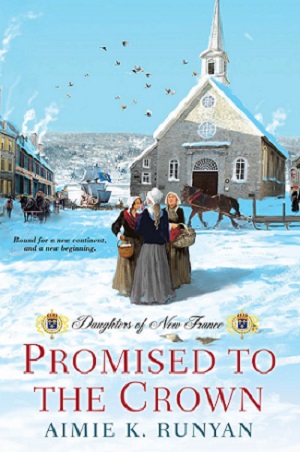How can a writer employ multiple POVs successfully? Author Aimie K.Runyan discusses the advantages and disadvantages of this writing technique.

There have been many recent examples of books that employ multiple POVs exceptionally well. George R.R. Martin’s Song of Ice and Fire series and Paula Hawkins’ Girl on the Train are just two successful examples. One of the best, in my opinion, is Barbara Kingsolver’s Poisonwood Bible. Each POV character has a gorgeous, distinct voice and the complex structure is an absolutely a necessary element in advancing the story. It’s tempting to adopt this format in our novels because it looks impressive and has a lot of potential for some interesting play on perspective, but it’s not the right choice for every book. Before choosing whether or not to use this approach, consider the following advantages and disadvantages of the multiple POV structure:
Advantages:
• Of course the most obvious advantage is that using multiple POVs allows you to show the world, your story, and other characters from more than one set of eyes. In traditional narrative we might, for example, be limited to the perspective of the young noblewoman forced into a loveless marriage. The story is very different when we get to see the perspectives of her suitor, her mother, and her lady’s maid as well.
• Multiple POVs can create a wonderful level of complexity to your writing when done well. For example, if the young duke from chapter three describes himself as having unimpeachable moral character, and his valet mentions his tendencies to cheat his tenants in chapter five, the reader has to decide who is worth trusting.
• Telling the story from multiple POVs opens up a wider world for the reader. If we are limited to the lovelorn aristocrat, we only see the life of the upper class. Including the perspective servants and townspeople allows the reader to see a fuller picture of the world you’re trying to unveil. The young noblewoman wouldn't spend much time in the kitchens, so if you need your reader to see the preparations for the wedding feast, you need to enlist the eyes of a servant, for example.
• It tends to keep your narrative fresh and interesting. When we have the opportunity to see things from a new perspective, it can revive interest in the reader. This is especially useful when using POV characters who are less than likeable or who are, for whatever reason, more palatable in small doses.

Disadvantages:
• It’s not easy to employ multiple POVs well. Each POV character’s voice must be spot on and easily recognizable. Most readers will not flip back to a chapter heading to remember who is speaking if it’s not obvious. This is especially true in the era of the e-book when flipping to the chapter heading can be a chore.
• Using multiple POVs is not a license to “head hop”. Your work needs to have logical rules about when the POV shifts occur (typically each chapter with a character heading) or you will just disorient the reader.
• It is harder to establish deep emotional connections when you are dealing with multiple POV characters. You need to take the time to establish all your POV characters well enough that your reader is invested in them, or they simply won’t care enough to keep reading. For this reason, multiple POV books tend to be long, which can make for a harder sell.
• It may be challenging to keep the pace of the story moving quickly if you retell the same events from different perspectives. It’s important to keep forward momentum, even if it’s tempting to show an event, say the murder of the duke’s valet, from the point of view of all the main characters. You have to decide whose perspective is most important in each moment, and find ways to deftly show the other POV characters’ reactions to those key events later in the story.
In short, the multiple POV structure is brilliant when well executed, but is clumsy or downright boring when it isn't. I chose the structure for my first novel, Promised to the Crown, because I wanted to show the wide range of experiences of the women who decided to emigrate from France to Canada, rather than just one woman’s story. In order to paint a more complete picture about women of various stations who abandoned their lives to found a new country, I needed to have several characters who represented women from different walks of life each tell her story. It worked for my particular story, but will definitely not be using it for every novel I write in the future. I urge every writer who asks me about using multiple POVs in their own work to decide if they think using multiple characters to tell the story is essential, or if it’s just overcomplicating the work. If the story can be told efficiently by one character, a more traditional narrative is almost always the right choice.
So as a writer and a reader, do you have a preference between the singular narrative or multiple POVs? Have you attempted multiple POVs in your own writing?
Aimie K. Runyan is an author of Historical fiction whose purpose is to celebrate history’s unsung heroines. Her debut novel, PROMISED TO THE CROWN, the story of three women sent by Louis XIV to help colonize his Quebec colony, releases April 26, 2016 from Kensington Books. She has also published a short work of science fiction in the BRAVE NEW GIRLS anthology (all proceeds go to the Women in Engineering Scholarship Fund). Aimie loves travel, cooking, theater, and hiking. She lives outside Denver with her loving husband and two adorable children. You can connect with Aimie on Facebook, Twitter, and Goodreads.
Comments